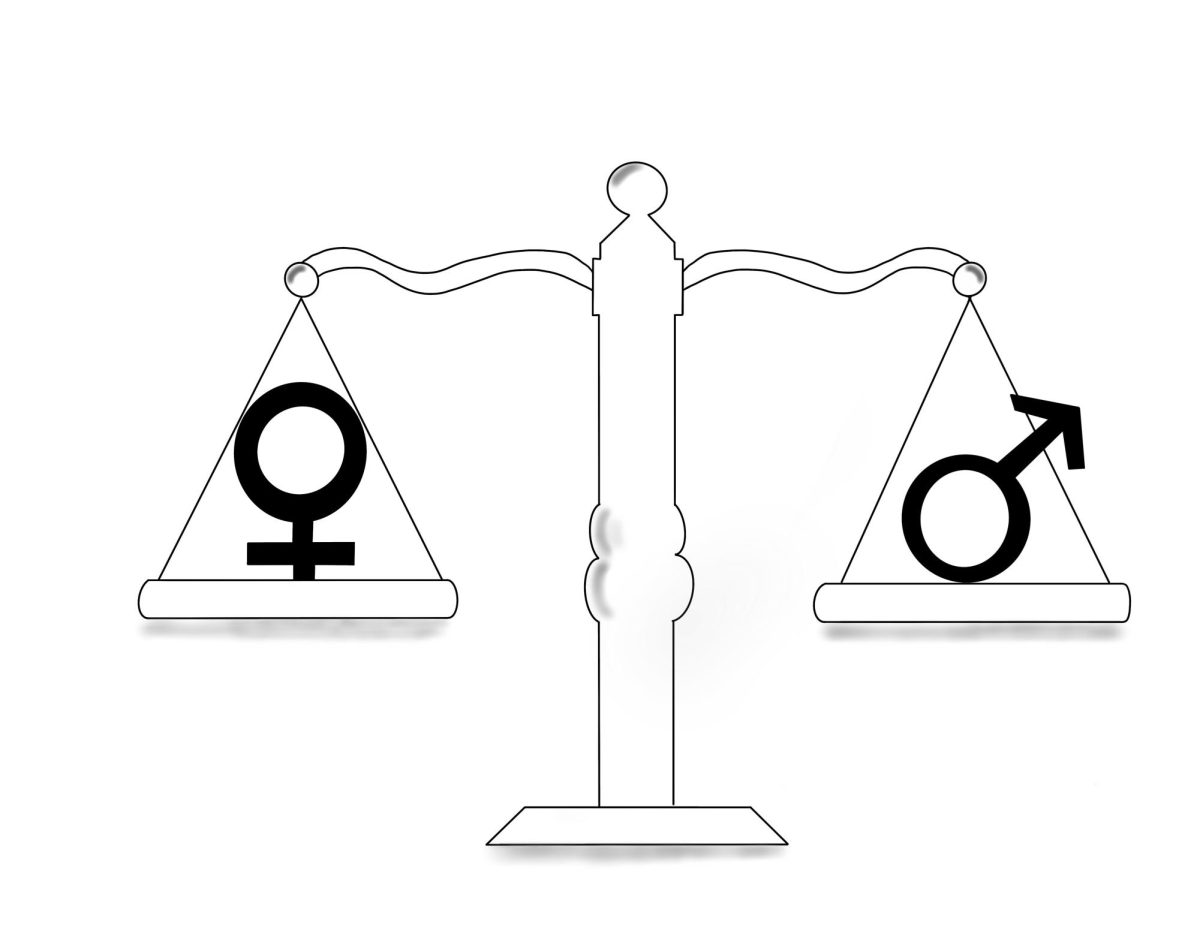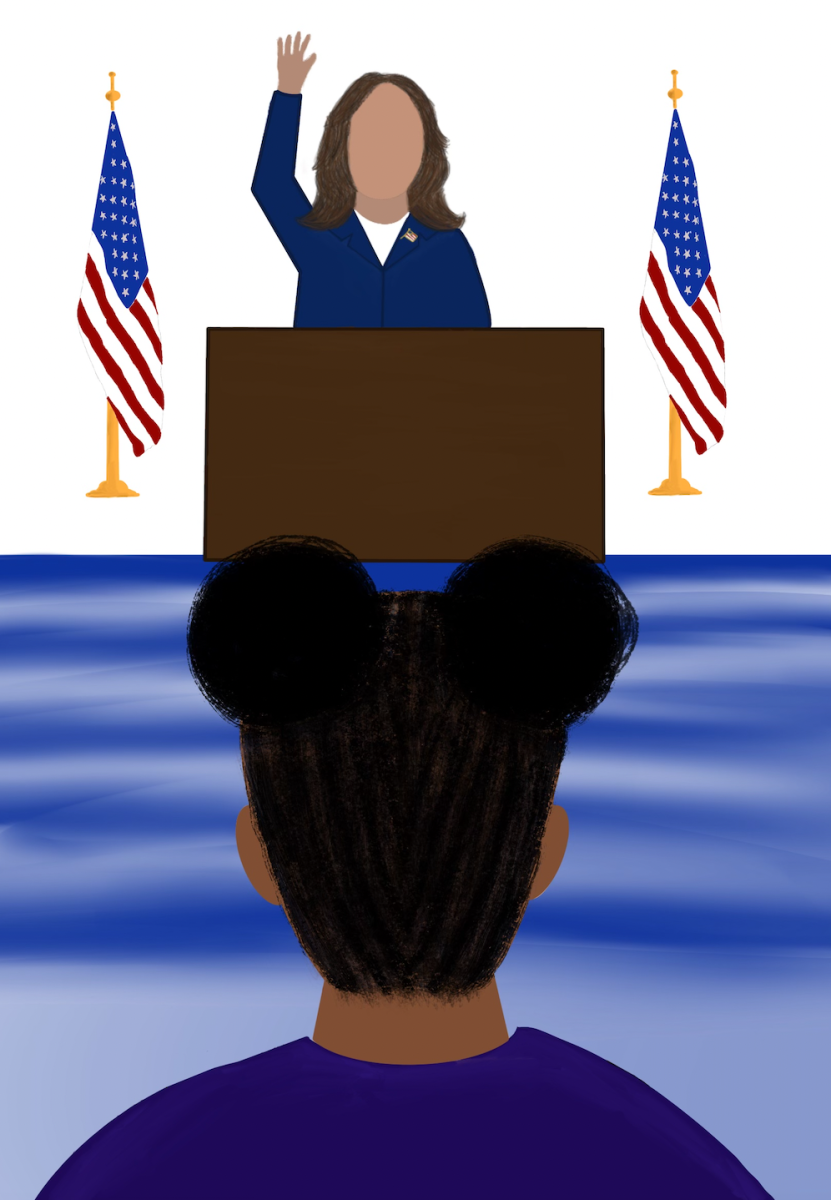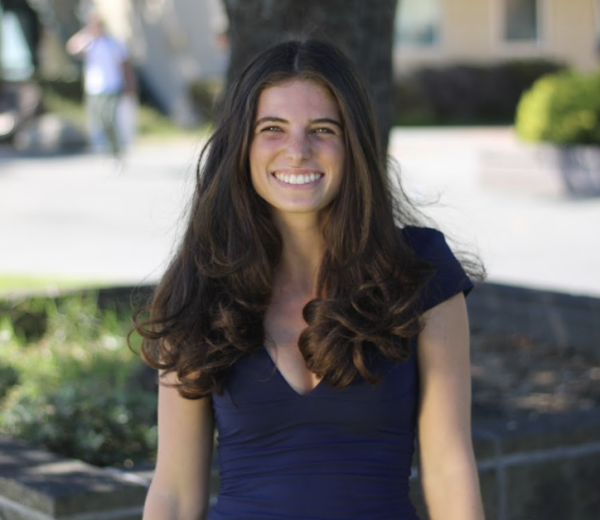Political polarization has become a defining feature of recent elections, particularly in the presidential race. Now more than ever, as a result of the two-party system, people are forced to align with the extreme side of their party lines, leaving no room for middle-ground voters. As candidates and their parties grow further apart in their beliefs, policies and values, voters end up propagating this increasing polarization through biased media, misinformation, fearmongering and candidate extremism.
Senior Dylan Harms has closely followed local and national politics for much of his life and will be eligible to vote in the upcoming election. Although decided on his own vote, he worries about the divisions between the two parties.
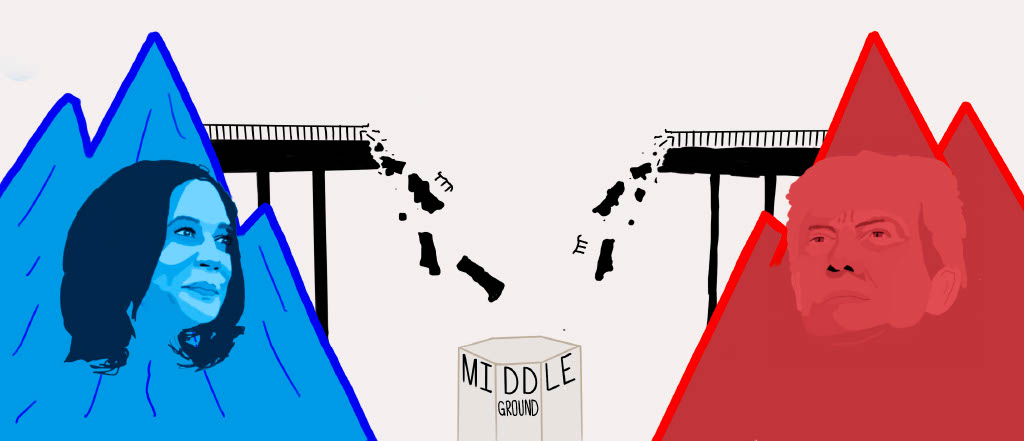
“You have to choose one vote or the other. There’s not a lot of middle ground. You could vote third party, but the chances of a third party candidate winning is just so slim that you’re just throwing your vote away for whatever party you’re more closely aligned with: Republican or Democrat,” Harms said.
Social media plays a huge role in informing the youth and the general public. On most platforms, coverage tends to lean one way or the other depending on the algorithm, leading to a sharper divide between the two parties.
“Information that most people are getting [about the election] is from popular social media sites like Twitter, YouTube or TikTok. There’s a lot of misinformation on the actual policies of the two candidates,” Harms said.
According to a survey conducted by Statista in 2022, 50 percent of Gen Z news consumers reported using social networks as their primary source on a daily basis. Social media is a valuable and effective way to broadcast information, but misinformation can spread just as efficiently.
Government teacher David Plescia has also noticed that many kids get their political information solely from social media, contributing to the polarization between parties.
“There’s a lot of things [on social media] that are not right, and it creates this understanding that maybe the other side is extreme or different. [Your vote] is something that takes a while to figure out. You hear all this stuff that isn’t necessarily true, so you have to dig through the mud,” Plescia said.
When misinformation is spread through social media, it can lead first-time voters to have extremely negative views of the opposing party. According to a study by Pew Research in 2016, about half of Republicans and slightly more than a third of
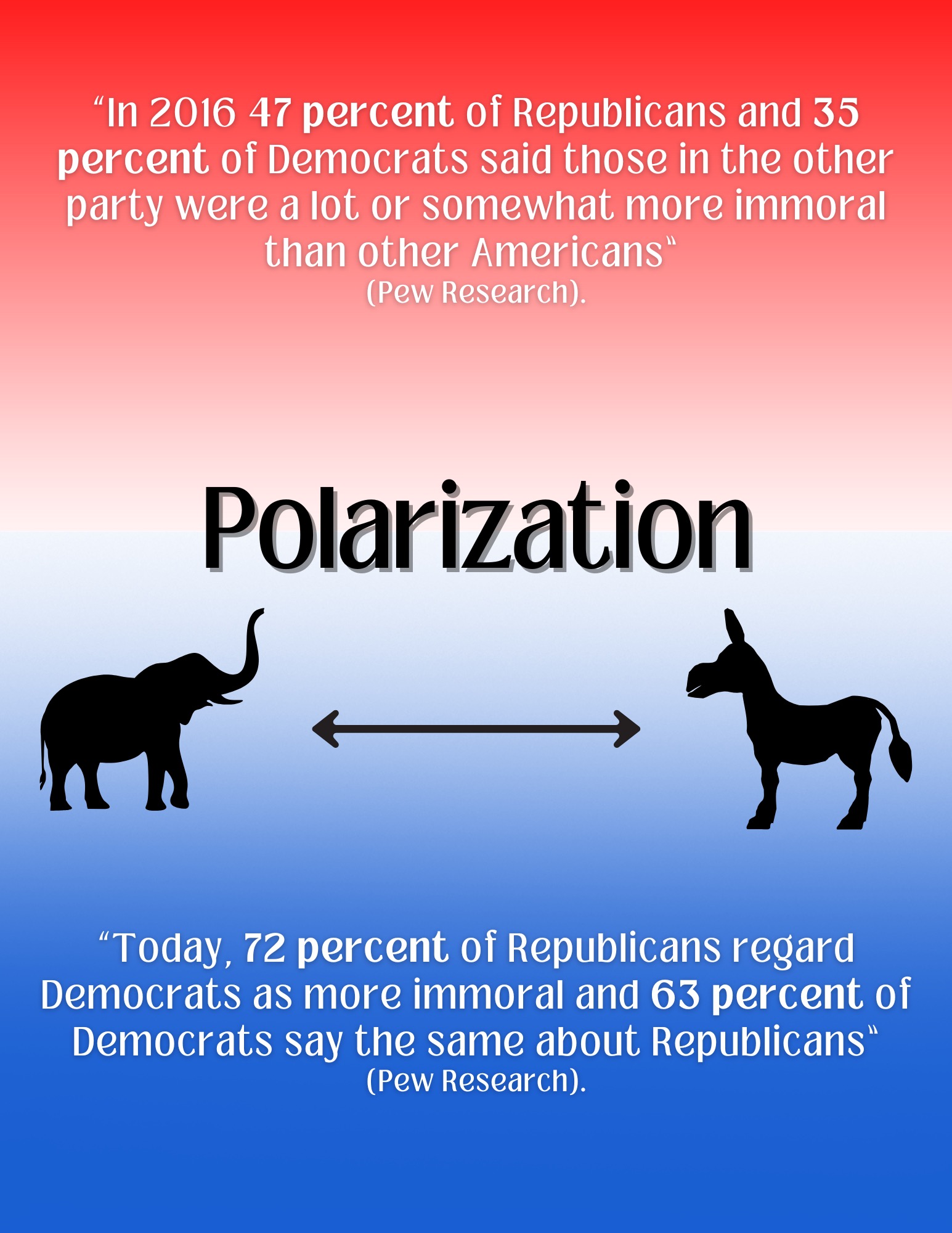
Democrats said those in the other party were a lot or somewhat more immoral than other Americans. Today, 72 percent of
Republicans regard Democrats as more immoral, and 63 percent of Democrats say the same about Republicans. Since the 2016 election, extreme party polarization has led to more overall negativity and a lack of knowledge about current politics. Due to the algorithm, first-time voters tend to only receive biased information promoting one party and its policies, which contributes to rising polarization.
According to The Center for Information & Research on Civic Learning and Engagement, less than one in five young people have heard about politics and issues this year from political parties, campaigns or community organizations. Social media has become the main avenue for youth to receive information about the election. Senior Julia Laury, an eligible voter in the 2024 presidential election, has felt the impact of misinformation on her ability to make an informed vote.
“I would say I base my [political] stance on what I hear from other people. I don’t do my own research. I should, but I don’t,” Laury said. “However, actual education on this is very important. I’m very passionate about [political education] because [while] the voting age isn’t young, I think that a lot of people my age are not as educated as [they] should be.”
Not only is misinformation impacting this continued polarization, but so is the extremism political candidates have displayed. Both candidates consistently depict the other as radical, which gets highlighted in the news and circulated in voter conversation.
“I think that both candidates are utilizing extremism to paint their opponent as an extremist towards the extreme right, and far left. [This creates] a really big political polarization between people, [especially impacting] first-time voters… you don’t have a middle ground,” Harms said.
Besides the extreme policy divide between the candidates for both the Republican and Democratic parties, new or soon-to-be voters are severely influenced by their differing personalities, rather than by their policies. Voters can oversimplify what a party stands for by making assumptions based on what they hear about the personality of the presidential candidate.
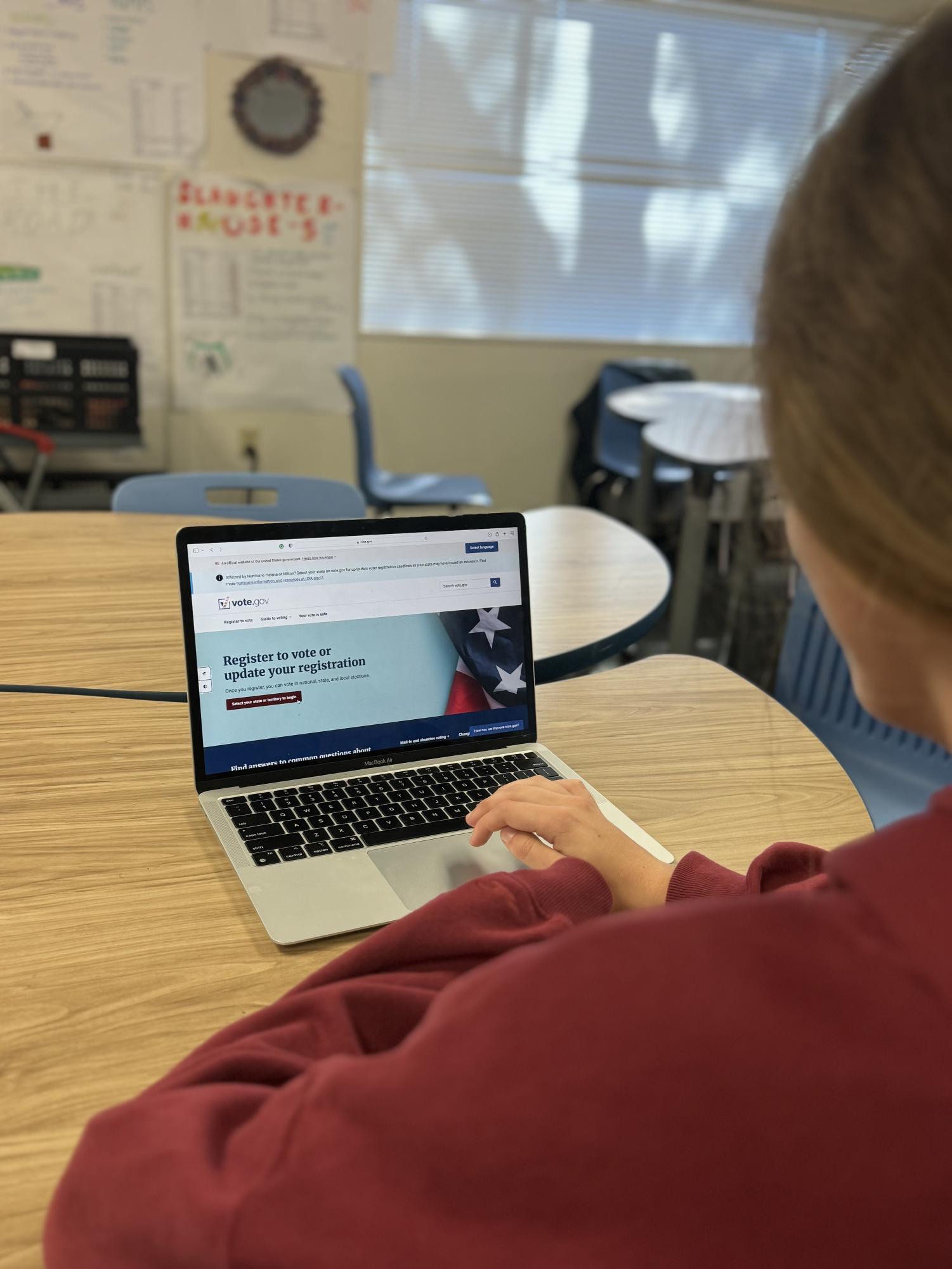
Tiburon Town Council Member and Redwood parent Issac Nikfar agrees that the 2024 election has seen a shift in ideology from previous elections.
“It can be polarizing for the youth to potentially have not seen broader issues, like the economy, that can impact their long-term success. I think that’s [something], where, if you look back at previous elections, maybe 2008 or before, you can see that there wasn’t as much pageantry, and it wasn’t as much for show,” Nikfar said. “[The election process] was more about focusing on why people should vote for the candidate, what that candidate has accomplished, or what that candidate is going to accomplish in terms of their plans.”
Without a middle ground, voters are forced to the edge of a single side, which can lead to negative views about the party that they aren’t a part of, contributing to this great divide.
“Everyone’s making assumptions about the party that they’re not part of, and there’s this overwhelming wish to win. But that’s where what the candidates are going to do and how they’re going to impact your life, is really important to understand,” Nikfar said.
Another factor contributing to polarization in this election especially has been “fear-mongering” by both candidates.
“One of the most effective ways to get someone to vote is fear-mongering and saying, ‘Well if you vote for this candidate, this is gonna happen,’ because [each candidate] is extremely left-leaning or extremely right-leaning,” Harms said.
Some of the most controversial issues between the two parties are actually what each uses as leverage to drive voters away from the other party.
“Arguably, one of the most prevalent issues of the election is immigration and the border, and that’s used as a huge tool. [Republicans] say, ‘If Harris gets elected like she’ll let every migrant, legal migrants, do your job,’” Harms said. “You see the Democrats use [fear-mongering] for Project 2025, and you see the Republicans use it for the border and stuff like that.”
Polarization, fueled by misinformation, is increasingly harmful to all voters, especially first-time voters. However, as we approach the upcoming election, increasing political education is the first step to combat misinformation.
“You as new voters [can] understand and codify what your values are right now. Find a candidate and do the research. There’s so much information available online, so you [can] go deep and understand what’s important to you,” Nikfar said.



